Wanting to grow longer, stronger and healthier hair? The practice of hair oiling for hair growth can help you get the healthiest, best hair of your life.
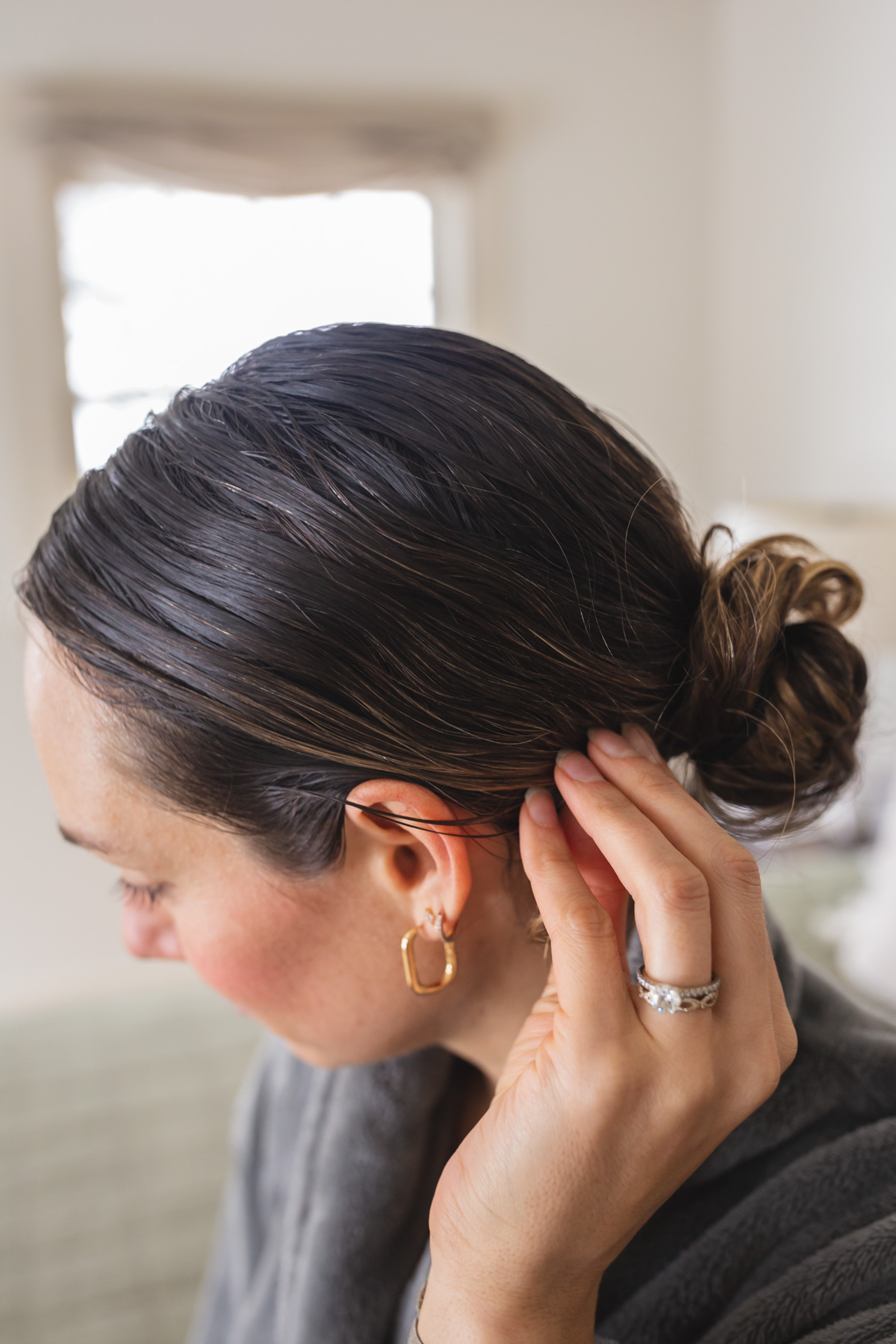
After having two kids and hitting my mid-30s, I suddenly noticed that my hair just wasn’t like it used to be. It felt dry, straw-like even at the ends, my scalp was itchy and despite being 3 years postpartum, I was still finishing each shower with a hand full of hair that had fallen out.
I switched shampoos and tried washing less often, but still, I was having quite a bit of hair shedding and started to get concerned. Being who I am, I’m always looking for natural ways to help heal my body, and yes, while your hair might feel more of a cosmetic issue, excessive hair shedding can be a sign that something else isn’t right.
About a month ago, I started a weekly practice of hair oiling for growth and to help remove build-up and balance my scalp and reduce shedding and have been so happy with the results so far. I can’t wait to update you all in a few months to see even more benefits! Now, let’s talk about what hair oiling is, how to properly put oil in hair and which oil you should use depending on you hair type.
What is Hair Oiling
If you’re seeing hair oiling treatment trends all over your TikTok or IG, it might feel like a new thing, but it’s actually not. Hair oiling is an ancient Ayurvedic practice that’s deeply-rooted in the ancient Indian system of medicine.
Ayurveda, which translates to “knowledge of life,” places great emphasis on holistic well-being, and hair care is no exception. Oiling for hair growth involves the application of natural oils, such as coconut, sesame, or almond oil, to the scalp and hair to nourish and strengthen the strands. According to Ayurvedic principles, regular hair oiling not only addresses external concerns like dryness and frizz but also promotes overall health by balancing the doshas, the three energies believed to govern the body.
It’s not just about pouring oil all over your hair, you’ll need to massage it into your hair and scalp as this stimulates blood flow and circulation which helps promote hair growth.
In today’s day and age, this ancient practice can be used to repair damaged, dry hair, promote hair growth, and reduce hair fall. It’s one that will leave your strands feeling thicker, healthier, shinier and stronger, and really—who doesn’t want that?
The Benefits of Hair Oiling
There are so many positive benefits from hair oiling, so let’s explore a few if you’re not convinced this practice is worth it:
Nourish & Moisturize by the Oiling Scalp
At the root of hair health is your scalp, and without a healthy scalp, you won’t get the beautiful, healthy hair you’re longing for. Regular hair oiling can nourish your scalp providing necessary moisture to prevent dry, itchy scalp and flaking or dandruff.
Remove Excess Buildup
Think of it like the practice of oil cleansing your face. Oil can break down oil and dirt better than water and gets deep into your pores, removing excess sebum and buildup from products. Clean, healthy skin on your head is primed for better health and growth.
Strengthen Strands & Prevents Split Ends
Regular oiling also strengthens hair from root to tip, promoting elasticity and minimizing breakage. For someone like me, this was reason enough to give it a try! A quick note—if you have split ends, hair oiling will not repair them, you’ll need to get them trimmed. After a good trim, this practice will prevent them in the future.
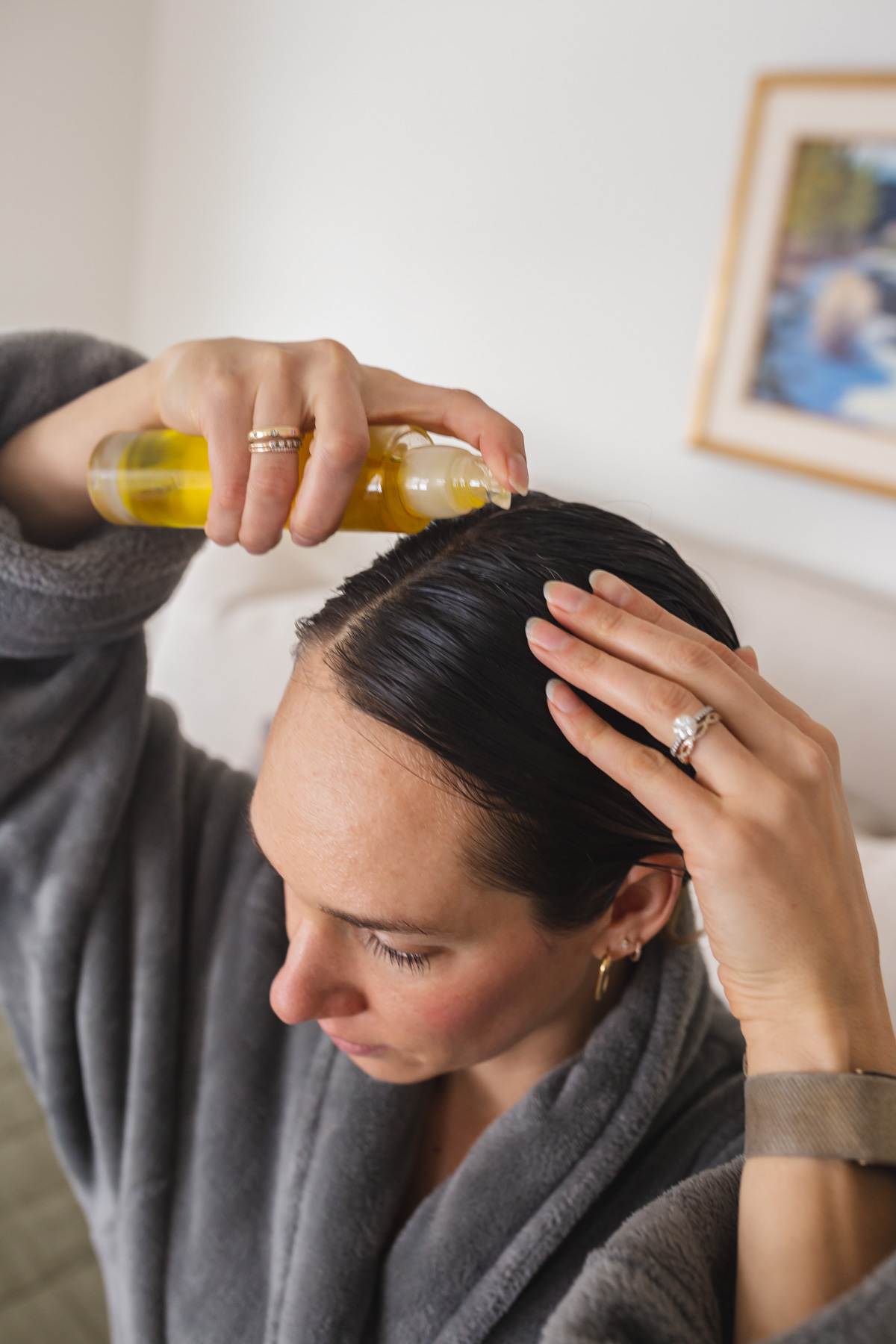
Improves Hair Growth
Massaging the oil in hair can increase blood flow and circulation to the scalp, both which greatly help stimulate growth. With regular hair oiling, you will notice more growth—just give it time, it won’t happen after only a few uses!
Improves Overall Hair Health
Hair oils are full of antioxidants and nutrients that help strengthen your overall hair health and give you some serious shine and bounce when you practice regularly.
Understanding the Science Behind Hair Oiling
One of the key scientific aspects of hair oiling lies in the molecular structure of different oils. Many natural oils boast a low molecular weight, allowing them to easily penetrate the hair cuticle and reach the innermost layers, imparting moisture and nutrients where they are needed most. This penetration helps in reducing water absorption by the hair shaft, which is especially beneficial for individuals with porous or damaged hair.
By using oils that are rich in fatty acids, vitamins, and antioxidants, these oils can play a crucial role in nurturing hair. For instance, coconut oil, a popular choice, contains medium-chain fatty acids with a unique ability to penetrate the hair shaft, reducing protein loss and strengthening the strands. Similarly, almond oil is rich in vitamin E, which provides nourishment and helps in maintaining a healthy scalp. You’ll often find these two ingredients in the best hair oils on the market.
The massaging action during the application of oil also plays a pivotal role. Scientifically, this massage stimulates blood circulation in the scalp, promoting nutrient-rich blood flow to the hair follicles. Increased circulation facilitates the delivery of oxygen and nutrients to the hair roots, contributing to improved hair growth and overall scalp health.
The antioxidative properties of certain oils protect the hair from environmental damage, including UV rays and pollutants—things we often don’t think about in our day-to-day lives.
These antioxidants help neutralize free radicals, preventing oxidative stress that can lead to hair damage and premature aging.
So no, hair oiling isn’t just some beauty trend on the internet, it’s rooted in ancient practices and science and is well-worth trying if you’re looking to naturally improve the look and feel of your hair, as well as stimulate more growth!
Different Types of Hair Oils & Their Benefits
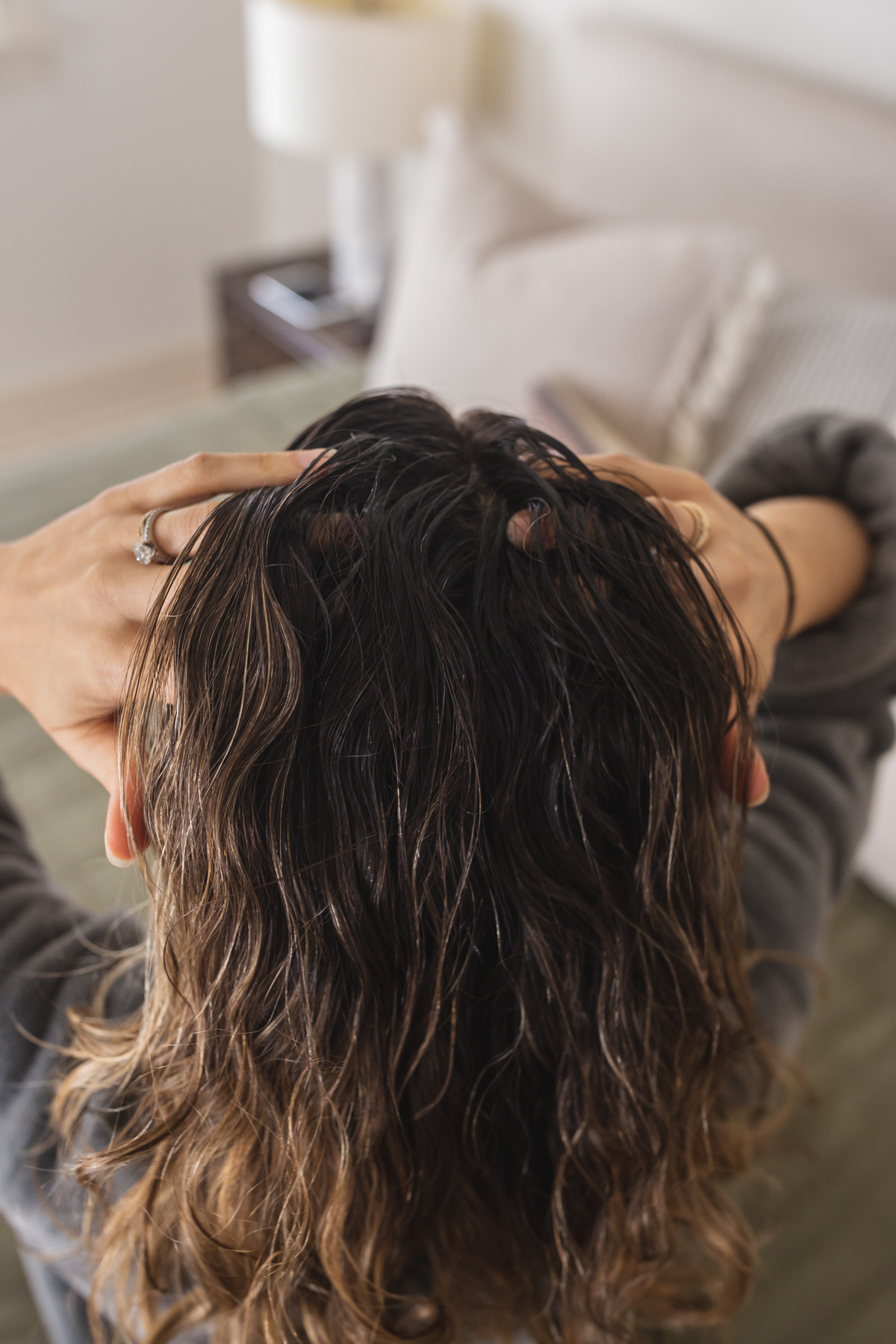
There are so many different types of oils out there and if you’ve been looking for hair growth oils, you’ve come across rosemary oil and coconut oil. Any hair oil blend will contain some carrier oils as well as some essential oils or oil infusions. Here are some of the best carrier oils to look for in hair oils, or to buy if you plan on making your own (more on that in a second!):
Coconut Oil
One of the best carrier oils for hair as it deeply moisturizes and prevents protein loss. It’s also inexpensive and readily available at your local grocery store.
Jojoba Oil
This oil is very close to our skin’s natural sebum which makes it a great option for your hair oil. It helps maintain balance on your scalp and promotes growth
Sweet Almond Oil
Deeply hydrating and nourishing, this oil is great for anyone experiencing dryness, flaking and dandruff. Use argan oil for hair oiling for dry hair for best results.
Argan Oil
This oil helps fight frizz, adds shine and can reduce dandruff all while moisturizing the scalp and hair strands.
How to Choose the Right Hair Oil for your Hair Type
Dry Damaged Hair: Coconut oil is great for hair that’s dry, damaged and brittle as it provides intense moisture
Frizzy Hair: Argan Oil is ideal for taming frizz
Fine, Thin Hair: Jojoba oil as it’s lightweight and won’t weigh your hair down
Dry Scalp: Sweet almond oil is ideal if you have a dry itchy scalp as it’s sensitive and gentle.
Step-By-Step Guide: My Weekly Hair Oiling Treatment
Okay, so hopefully by now you fully understand how beneficial oil treatments are for your hair and even know which one will be best for your hair type! So, how do you use oil for hair? Let’s walk through my process for my weekly hair oiling treatment for a healthy scalp and hair growth.
I typically do this on Sunday afternoon or early evening so I can leave it in for a few hours. Your hair will look visibly oily and greasy, so it’s best to do this while you’re at home in my opinion.
Step 1: Brush you Hair
Before putting any oil in your hair, make sure to brush your hair and get any tangles out. You’ll want to avoid brushing your hair while it’s oiled because your hair will be in a sensitive state. You can use a wide tooth comb if necessary, just avoid pulling too hard to avoid breakage.
Step 2: Put Oil on Hair
Using a dropper or oil applicator like this one, put oil in hair in sections. You don’t need to go overboard here, the oil will spread. You just want your roots to be lightly saturated.
Add a few more drops to your hands and massage into the mids to ends of your hair.
Step 3: Massage Oil into Scalp
As you now know, it’s not just the oil that does the magic, it’s the massaging of the oil into the scalp to increase blood flow. This is especially important for breaking up dirty and buildup in your hair, as well as promoting hair growth.
Wash your hands and use fingers to deeply massage your scalp in a circular, upward motion for a total of 3 minutes. You can also use a silicone scalp massager which feels really nice. Just make sure that you wash it thoroughly between uses.
Step 4: Let Oil on Hair Sit for 2-4 Hours
The easy part! Tie your hair into a bun without pulling too tightly, or put it up with a claw clip to keep the oil off of your clothes.
Step 5: Shampoo Hair
I learned that when I’m washing out my hair oil, shampooing twice is essential. The first wash removes the oil from your hair, and the second wash actually cleanses your scalp and hair. If you only wash once, you run the risk of not removing all the oil. This can leave you with a sticky scalp or roots that get oily faster because you didn’t remove it all.
Step 6: Condition Hair
After shampooing, condition hair from your mids to ends and rinse completely. Gently remove excess water from hair and dry with a microfiber hair towel if possible.
Step 7: Air Dry or Style Hair
I like to let my hair air dry the day after my oil treatment, but if you need to dry and style it, that’s fine too. Just remember that heat can further damage your hair, so when you can avoid heat!
Common Mistakes to Avoid While Hair Oiling
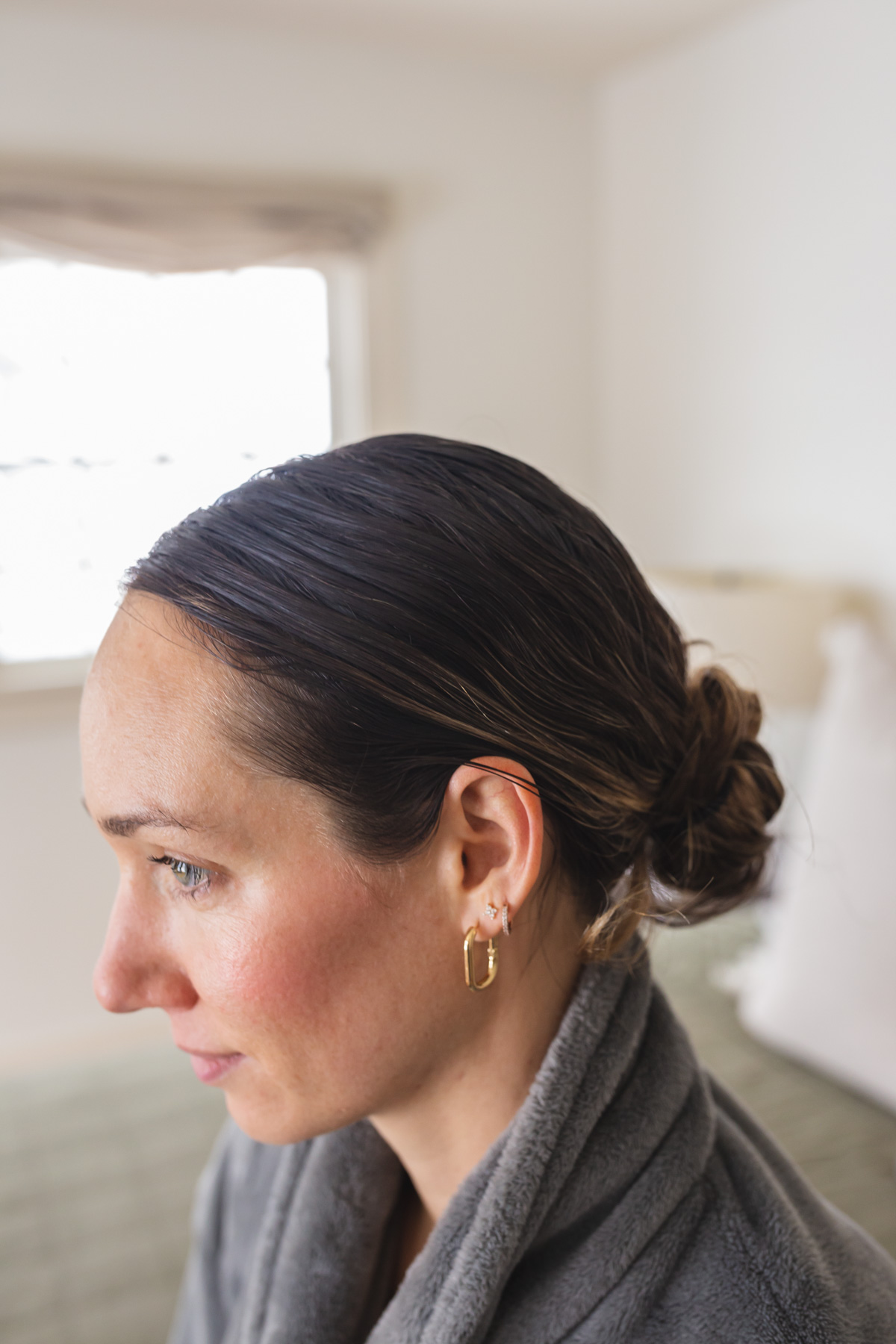
Don’t Oil Overnight: It’s common for people to recommend leaving oil on overnight, but I don’t recommend it. Not only does it get all over your pillow, but it can also attract dirt from your pillowcase and potentially clog your pores. I recommend leaving it on for 2-4 hours max and then washing it out.
Don’t Use Too Much Oil: Using too much oil can weigh hair down and make it difficult to get out of your hair. It won’t add any more benefits to completely douse your head.
Don’t Tie Hair Too Tight: When your hair is oiled, avoid tying it up too tight to avoid causing any breakage.
Don’t Use Heat on Oiled Hair: Never EVER apply heat to oiled hair! Think about what happens when you heat oil on a stove and throw in some food—it fries! We definitely don’t want to do this to our hair!
Favorite Products: Hair Oil for Growth
Here are some amazing hair oils for growth and a healthy scalp to try:
If you want, you can also easily make your own. This is what I do because it’s more cost-effective and so simple to make. You can customize it to your hair type too. Here’s a tutorial for making your own DIY hair growth serum.
How Often Should you Oil your Hair?
Some people say to oil you hair every time you wash it, but for practicality sake, I don’t do this. From my experience, oiling your hair once a week provides excellent results and is far more manageable for anyone with a busy schedule.
Additional Tips for Healthy Hair
Use Less Heat: Heat is one of the most common ways we damage our hair. Using heat less often is great for improving the overall health of your hair. Instead try using heat only once a week, or a heatless curler for beautiful waves without the damage.
Gentle Brushing: When brushing your hair, start with the ends and move upwards to avoid creating knots and yanking out your hair.
Clean your Hair Tools: Make sure to regularly clean your hair tools—brushes, massagers, combs, straighteners, curling irons and more.
For brushes, combs and massagers, simply heat a bowl with warm-hot water and a non-irritating cleanser and a splash of apple cider vinegar and let them soak or 20 minutes. Every so often shake them vigorously under the water to loosen any debris.
For heat tools, spray some rubbing alcohol on them and wipe clean. Make sure to do this while your tools are cool, not hot!
Scalp Massaging: Use a scalp massager brush or your clean fingers for 3 minutes a day to increase blood flow and circulation to your scalp to promote growth. This also feels really relaxing and is a great way to wind-down at the end of the day.
Use Silicone-Free Hair Products: Products with silicone in them can cause lots of build-up in your hair which can clog pores and cause issues on your scalp. Switch to silicone-free shampoo and conditioners to avoid. It does take a week or so for your hair to get used to it, but after, your hair will feel amazing!
***Important:*** If you’re experiencing heavy hair shedding or loss, it’s smart to reach out to a dermatologist to rule out any sort of infection on your scalp or any nutrient deficiencies. I found out I had an iron deficiency and once that was addressed, my hair was able to grow faster. Often they can prescribe a medicated shampoo to combat the infection and then you can move forward with these healthy hair tips!
It’s no secret that regular hair oiling can nourish and moisturize your hair, remove buildup, promote new hair growth and finally give you the hair you’ve been dreaming of. I hope you’re feeling inspired to start your own hair oiling treatments each week and feel empowered to know what works for your hair. Get ready for silky, shiny, longer healthy hair!
BTW, how to curl your hair with a flat iron, and two insanely easy hairstyles for when you have no time.


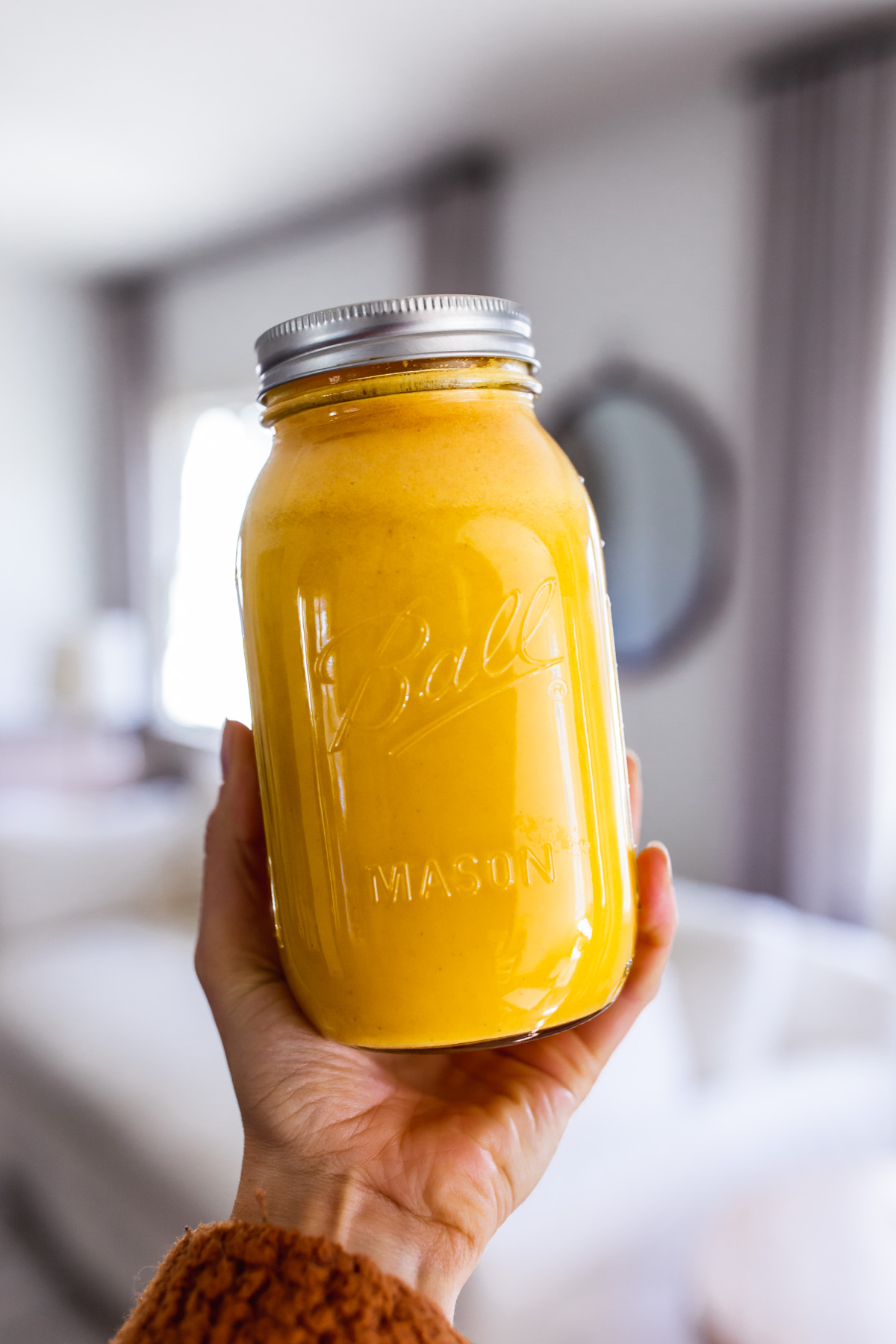


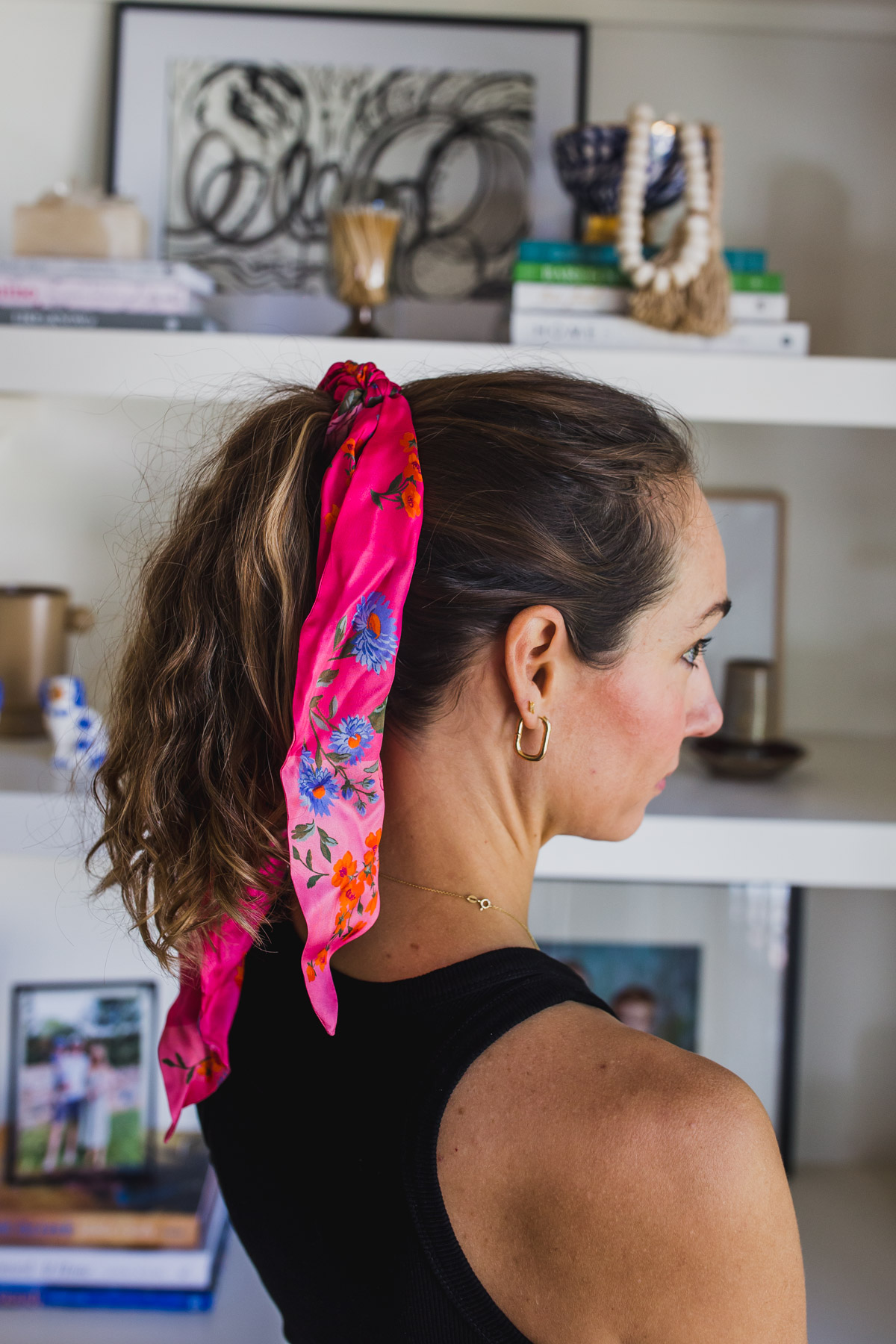



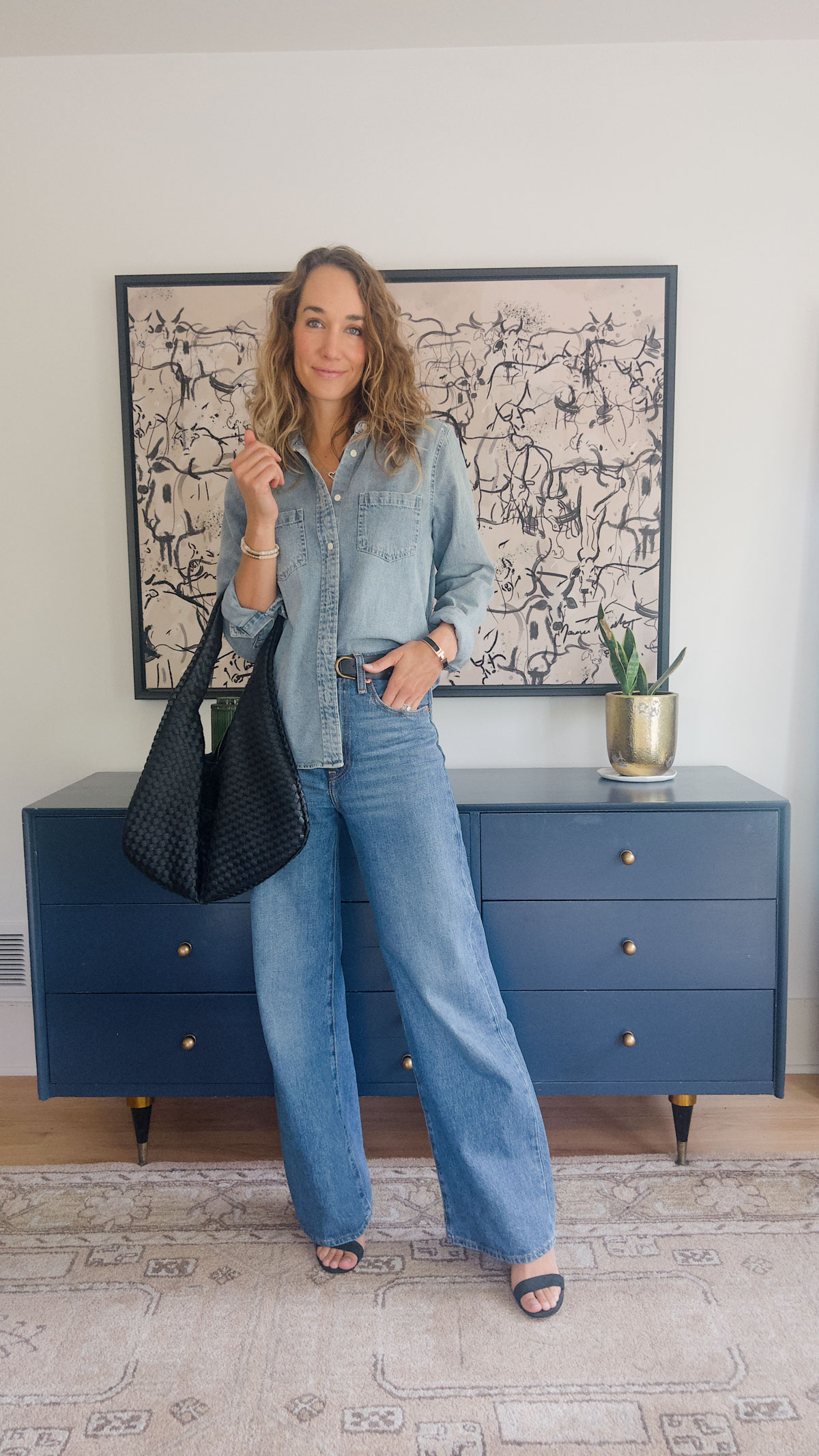
You must be logged in to post a comment.